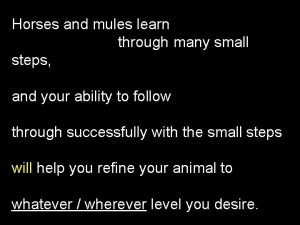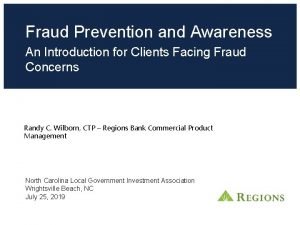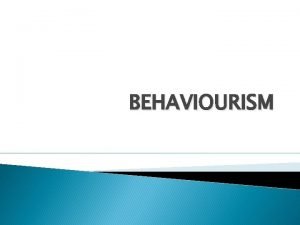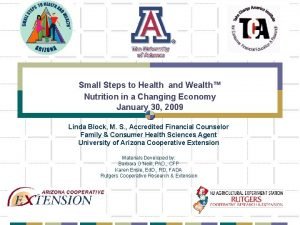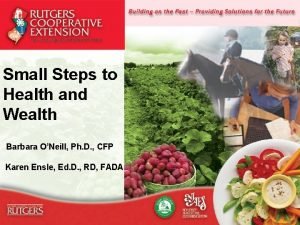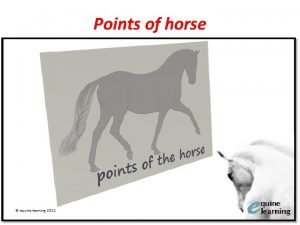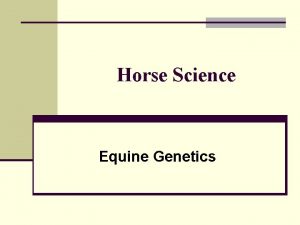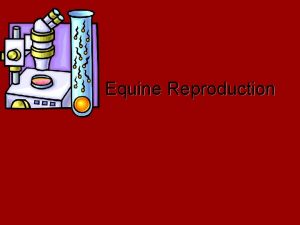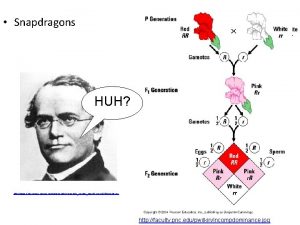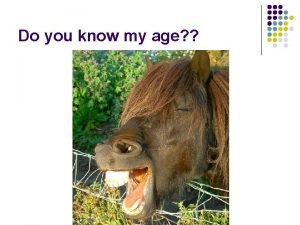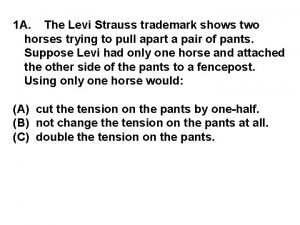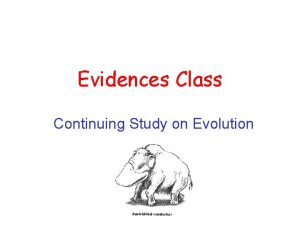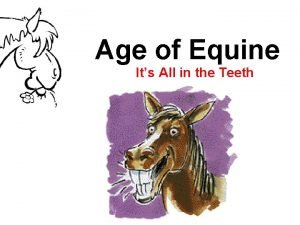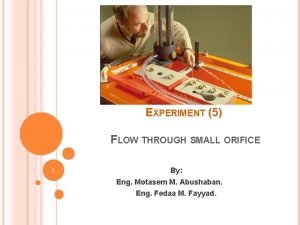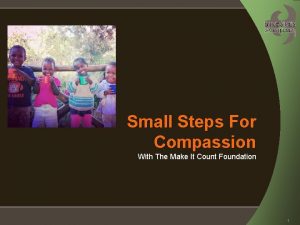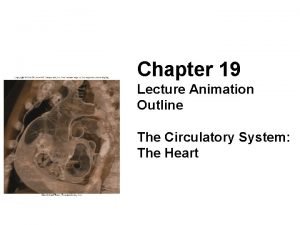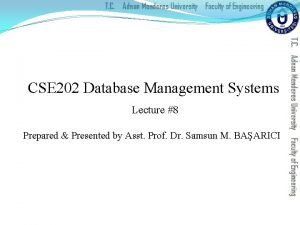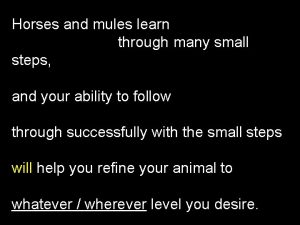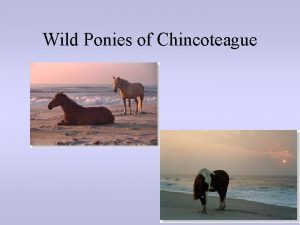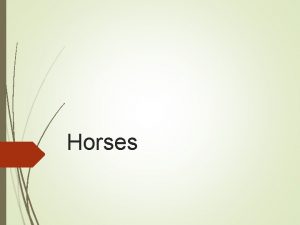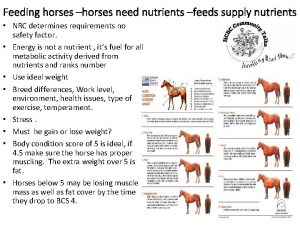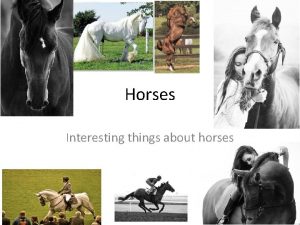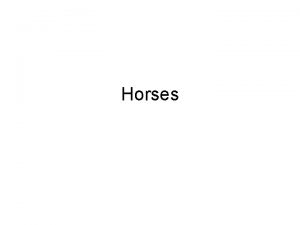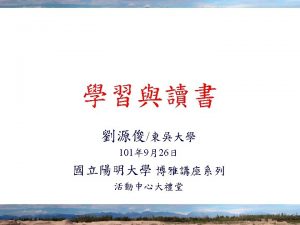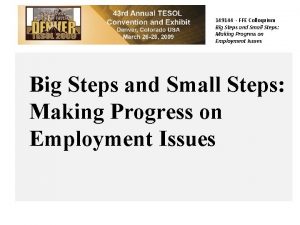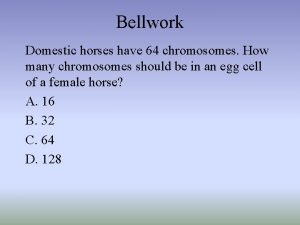Horses and mules learn through many small steps




























































- Slides: 60

Horses and mules learn through many small steps, and your ability to follow through successfully with the small steps will help you refine your animal to whatever / wherever level you desire.

Introducing a new watering device or some other barn feature will give you an opportunity to help the animal to learn. Let’s say that the waterer is an automatic one with a ball to push to access the water reservoir.

The horse will not know to push on the ball unless taught. You can teach him to push the ball by first familiarizing him with the waterer.

Then bounce the ball up and down; the animal may startle at first, but will soon recognize the ball as harmless Push the ball down so the water comes to the surface and splash your hand in it.

Remember, you can lead a horse to water, but you can’t make him drink. You will probably have to repeat this process more than once.


Public performance of music in non-Western cultures occurs in a freer, more relaxed environment. In Africa, it is not uncommon to see a group of accomplished musicians surrounded by people who join in by singing, clapping, playing rattles, and dancing along.

① In Indian Hindustani music, tradition dictates that the audience supply the tala (beat and meter) by quietly clapping. ②In general, the Chinese instruments used to play the melodies are more natural than those in the West, meaning that the materials from which they are made are readily found in nature.

③Interaction between the performers and community is an important part of the music-making process. ④Prior to the nineteenth century, concerts in the West were similar to this freer, more interactive experience.

⑤Not until the Romantic era, when composers made musical compositions admired “works of art” and composers themselves became “geniuses, ” was the audience required to sit in respectful, meditative silence.


Dr. Isaac Herschkopf, a psychiatrist, notes that we not only become good people by doing good deeds, but we become healthy people by doing healthy deeds.

(A)In the doctor's words, "she would stay there, and she would die a thousand deaths, but for her son's sake, she wouldn't move. “ In the end, her son never developed her phobia, and she, because of her repeated exposure for her son's sake, ended up curing her own phobia.

(B) Dr. Herschkopf explained that inheritance would come from learning, not from genetics. To avoid her son learning her phobia, the woman came to realize that she couldn't avoid dogs in his presence. So, when a dog came up to her while she was pushing her stroller, she didn't run away.

(C)Dr. Herschkopf once had a patient with a dog phobia so severe that she refused to address it; indeed, she stopped seeing the doctor. Several years later she called him; she now had a son and was scared that he would inherit her phobia.


Understanding, for a listener, means mapping the speaker's stories onto the listener's stories. One of the most interesting aspects of the way stories are used in memory is the varied effect they have on understanding.

Different people understand the same story differently precisely because the stories they already know are different. When they hear new stories, understanders attempt to construe these stories as old stories they have heard before.

They do this because it is actually quite difficult to absorb new information. New ideas ramify through our memories, causing us to revise beliefs, make new generalizations, and perform other effortful cognitive operations.

We prefer to avoid all this work. One way to do this is to simply assume that we are seeing or hearing is just the same old stuff.

The real problem in understanding, then, is identifying which of all the stories you already know is the one tell to you yet again.


What is the best order for a report, paper or other technical document? Of course, it must be logical; but that means simply that the paper must have connection and sequence, and a variety of orders are possible under this heading.

Too many writers interpret the term logical to mean chronological, and it has become habitual to begin reports and papers with careful reviews of previous work. Usually, this is tactically weak.

Most readers of reports and papers are reading the documents because they are interested in, and know something about, the subject.

Therefore, to rehearse to them the findings of previous work is simply to bore them with unnecessary reminders. The interesting thing for them is the new information — the new findings and conclusions.

So it is usually best to start with those pieces of information. To give a long chronological account of work or procedures is normally appropriate only when the essential point of the paper is the chronological sequence.

Readers usually find papers much more attractive if information is in order of _____ from their point of view. It is most effective to start with the new, interesting and arresting information, preferably in outline form in a summary.

The summary may be detached as a separate unit with a heading or it may be simply a summarizing opening paragraph. But, however it is presented, it should serve the same purpose: giving the reader a quick, clear 'potted 9 version of the essence of the story that is to come.


In Northern NY, Rebecca's grandfather and great grandparents made a good living from dairy farms That were consisted / consisted of under two hundred cows, some chickens, and enough acreage to grow the hay and corn to feed them.

Milk was sold to local dairies who in turn bottled it and sold it to the local grocers in nearby towns and villages.

Since World War II, however, and the introduction of farm subsidies that benefitted big farms, milk prices have dropped considerably, made/making it difficult for small farms to survive.

Today, the countryside is now dotted with the broken-down remains of small farms.

No longer able to compete with subsidized CAFOs (confined animal factory operations), the land is either going fallow, or being sold to developers for new housing. And, the prison industry has taken over where/what there was once a thriving farm economy.


The 1950 s were a boom time in which many people hoped to live the "American Dream. " In the United States, a huge growth in industry caused large, modem factories to spring up across the land.

(1)Some of these factories produced clothes and new fabrics. (2) Within a few years of the end of the war, clothes were being mass-produced, and they filled the new department stores.

(3) As anyone knows, the first true department store arose in France in the mid-nineteenth century. (4)For the first time in history, people other than the very wealthy could afford to own a range of items, not just the few clothes they needed for everyday wear.

(5) "Ready-to-wear" collections were launched; a cross between made-to-measure and mass market clothes, they offered a degree of high fashion and exclusivity to people of moderate means.


As human civilization has become more complex, it has a need for more complex systems and tools. Traditional societies that depended on agriculture for subsistence had fewer requirements.

(A)Some communities still live this sort of life, as seen with the Amish people in various parts of the United States. This community has little need for many of the advanced tools that we are familiar with and lives a comfortable life with minimal technological intervention.

(B)People worked on a farm from morning to evening and returned home when it became dark. There was no need for much more than a secure place to live, food to eat, and basic clothes. Their tools were designed for basic living.

(C)On the other hand, most people living in the twenty-first century want the comforts of technology in their lives. Basic and applied research have produced new tools that help to fulfill those wants (which eventually become not just wants, but needs. )


Children raised in modem westernized contexts may have a hard time discriminating what's possible in modem situations versus what would have been considered appropriate under ancestral conditions.

In a large city, a child can throw chewed gum on the sidewalk without much cost. And I think this probably happens — at least in New York!

Under ancestral conditions, engaging in such socially questionable behavior would not only be more likely to get noticed (remember, it's a small group), but it would be more likely to lead to punishment and harmful effects on one's reputation.

A kid who did the equivalent of throwing gum on the sidewalk in an ancestral clan to risk adverse effects to his or her reputation. A kid who does this on the busy streets of Manhattan does not.

We need to raise our children not for the busy streets of modern Manhattan, but for the small, tight-knit villages that typified the environments of our ancestors.


1. What Your Skin Is Telling You 2. Accept and Be Tolerant of Your Age 3. Parental Influence on Children’s Emotions 4. We Only Age Outside, We Are Children Inside 5. What Might Childhood Look Like in the Future?

It probably is not hard for you to recognize that what happened when you were a child had an influence on what is happening in your life right now.

Yes, childhood has a great influence on our adult lives. We are not as adult as we look ; we are children in an aging skin.

It is as if the child from the past is still living inside of us. Maybe you even know certain foods or drinks that you did not like as a child and still do not like today. Maybe you had to drink or eat them back then and strongly objected.

Maybe you still fight it as an adult today. You can now ask yourself, "Is the person refusing at this moment the adult of today or the child of yesterday? "

I, for example, do not like tomatoes to this day. My grandma told me, "If you put sugar on them they will taste just like strawberries. " That is how I was seduced into eating tomatoes and afterwards I felt truly betrayed. I still cannot ____ tomatoes. 1. Stand 2. blame 3. reject 4. ignore 5. recognize

If you think about certain childhood fears, are they fully gone in your adult life? Many people who developed a fear of dogs in childhood still do not like to be around them in their adult lives. Who is scared of the dog now: you as an adult or the child within you?

1. What Your Skin Is Telling You 2. Accept and Be Tolerant of Your Age 3. Parental Influence on Children’s Emotions 4. We Only Age Outside, We Are Children Inside 5. What Might Childhood Look Like in the Future?
 Steps to mules
Steps to mules Are mules sterile
Are mules sterile The mules
The mules Kinesthetic learners learn best by
Kinesthetic learners learn best by Language
Language Do children learn through structured input?
Do children learn through structured input? Through and through sawing advantages and disadvantages
Through and through sawing advantages and disadvantages Learn english cartoons
Learn english cartoons Organisms learn about the consequences of behavior through
Organisms learn about the consequences of behavior through Hold your horses idiom meaning and sentence
Hold your horses idiom meaning and sentence Some may trust in horses
Some may trust in horses Trojan horses spyware and worms are all forms of
Trojan horses spyware and worms are all forms of What are the two types of main idea
What are the two types of main idea Soccer players learn many skills when playing soccer
Soccer players learn many skills when playing soccer Small steps to health and wealth
Small steps to health and wealth Small steps to health and wealth
Small steps to health and wealth Through one man
Through one man Class 2 furcation
Class 2 furcation Night of the scorpion by nissim ezekiel summary
Night of the scorpion by nissim ezekiel summary Movements are also sometimes called axial movements
Movements are also sometimes called axial movements Point of buttock horse
Point of buttock horse Herda gene in horses
Herda gene in horses Example of codominance
Example of codominance Wee foal
Wee foal Ted hughes the horses
Ted hughes the horses Gmail
Gmail Beloved horses hateful man traduzione
Beloved horses hateful man traduzione All the king's horses (short story)
All the king's horses (short story) Dobermannreview
Dobermannreview Horse age by teeth
Horse age by teeth Feed in a drum
Feed in a drum Black cowboy, wild horses comprehension questions
Black cowboy, wild horses comprehension questions Aqha uk
Aqha uk The levi strauss trademark shows two horses
The levi strauss trademark shows two horses Stone age horse
Stone age horse Incomplete dominance example
Incomplete dominance example Pictures of bowed tendons in horses
Pictures of bowed tendons in horses Jamie payton movie horses
Jamie payton movie horses Modified monogastric digestive system
Modified monogastric digestive system Horses before evolution
Horses before evolution Horses hate surprise parties
Horses hate surprise parties Nez perce horses
Nez perce horses Light horse breeds
Light horse breeds 7 year hook horse teeth
7 year hook horse teeth Dipentum
Dipentum Flow through an orifice lab report
Flow through an orifice lab report A small, solid particle that travels through space.
A small, solid particle that travels through space. Flow through small orifice
Flow through small orifice Small steps for compassion
Small steps for compassion Many sellers and many buyers
Many sellers and many buyers Many sellers and many buyers
Many sellers and many buyers Write as many words as you can
Write as many words as you can Steps of blood flow through the heart
Steps of blood flow through the heart Blood flow through heart steps
Blood flow through heart steps Slideshare
Slideshare River shannon
River shannon Acts 14 22
Acts 14 22 Er diagram in dbms
Er diagram in dbms Bookstore database design
Bookstore database design Erm and erd
Erm and erd Unary many to many
Unary many to many
